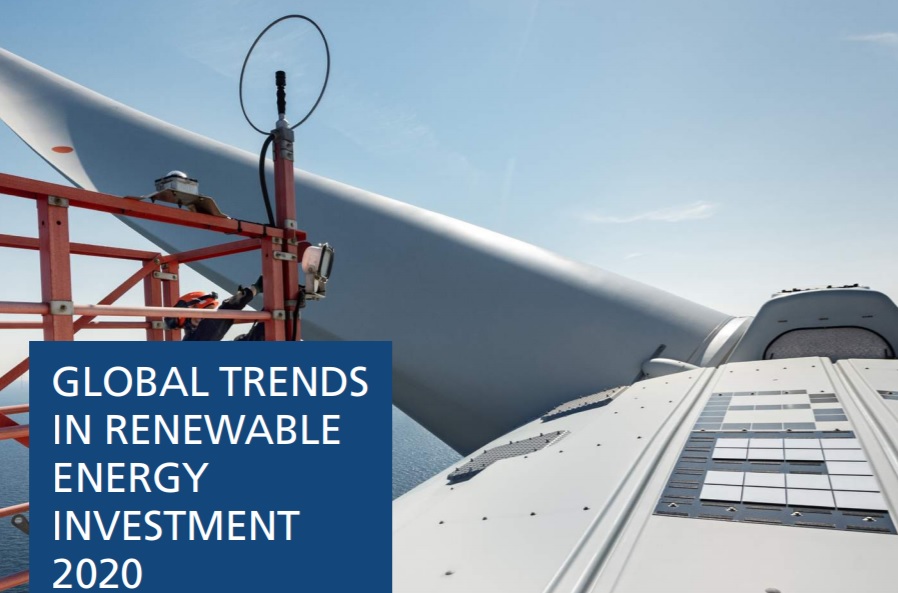Kategori : ELECTRICITY ENERGY NEWS, ENERGY AGENDA NEWS, SOLAR ENERGY NEWS, WIND ENERGY & RES NEWS - Tarih : 01 September 2020
Renewable energy 2030 targets already written into official policy by 87 governments around the world would mean the construction of an estimated 721 gigawatts of new capacity in wind, solar
and other non-hydro renewable power technologies over the next decade, according to analysis by BloombergNEF. Meanwhile, those private sector companies that have joined the RE100 group, pledging to source 100% of their power from renewables, will need to buy an estimated 210 terawatt-hours of green electricity by 2030, on top of what they consume now, in order to be on track. This could prompt the construction of an estimated 105 gigawatts of new wind and solar plants.
INVESTMENT IMPLIED BY TARGETS
The estimates above, based on actual commitments by governments and companies, imply a total of
826 GW of new non-hydro renewable energy capacity would need to be built between now and 2030.10
 The actual investment involved in building these gigawatts would depend on the mix of renewable energy technologies chosen (for example, offshore wind has a much higher average capital cost per
The actual investment involved in building these gigawatts would depend on the mix of renewable energy technologies chosen (for example, offshore wind has a much higher average capital cost per
megawatt than solar photovoltaics), on where the new capacity is located, and also on how the costs of
those technologies evolve during the 2020s. At 2019 global benchmark capital costs per
megawatt, 826GW of new capacity might have an upfront capital cost of some $900 billion – if the technology split was 75:25 between utility-scale PV and onshore wind. Or $1.1 trillion if it was
70:20:10 between utility-scale PV, onshore wind and offshore wind.11
Electricity is a vital part of the overall energy system, and for that system’s CO2 emissions, but it is far from the only part. In 2016, it was responsible for 42% of global energy-related emissions, with transport contributing 24% and buildings and industry a further 32%.
In the boxes below, we look at two areas that, like electricity, are becoming subject to specific
government targets, and are attracting rising interest among companies and investors. One is transport, and the other is heat.
RENEWABLE CAPACITY GROWTH IN 2019
The world invested $282.2 billion in new renewable energy capacity (excluding large hydro) in 2019. This was a mere 1% higher than the total for the previous year, and it was 10% below the record figure of $315.1 billion set in 2017. However, the amount of new renewable power added in 2019 was the highest ever, at 184 gigawatts, a full 20GW more than in 2018. Steep falls in capital costs have meant that more capacity in wind and solar can now be added than ever before, for the same number of dollars.
Investment trends in renewables in 2019 varied sharply between sectors and regions. Wind
attracted a record $138.2 billion, up 6%, helped by a boom in offshore project financings. Solar
saw a 3% fall to $131.1 billion, while biomass and waste grew 9% to $9.7 billion.
CAPACITY INVESTMENT – GLOBAL
Global investment in new renewable energy capacity (excluding large hydro-electric projects)
was $282.2 billion in 2019, up 1% on the previous year, thanks to a jump in spending on
small-scale solar systems.
Asset finance of utility-scale projects fell 5% to $230.1 billion, the lowest figure for any year since
2014. This was despite a late rush in offshore wind financings in the final quarter of the year. Investment in small-scale solar projects of less than 1MW leapt 37% to $52.1 billion, helped by the
increasing cost-effectiveness of electricity from commercial and residential systems in key markets
such as the U.S., China, Brazil, the Netherlands and Germany
TOTAL RENEWABLE ENERGY INVESTMENT
If you include research and development and the funding of specialized companies, as well as the
financing of generation capacity, then the resulting figure for total renewable energy investment was
$301.7 billion in 2019. This was 2% up on the 2018 total, and the third highest on record – after 2015 and 2017. Over the decade 2010-2019, total renewable energy investment was $2.8 trillion, or an average of $284 billion per year.
Source: “Global Trends in Renewable Energy Investment 2020”, fs-unep-centre.org





